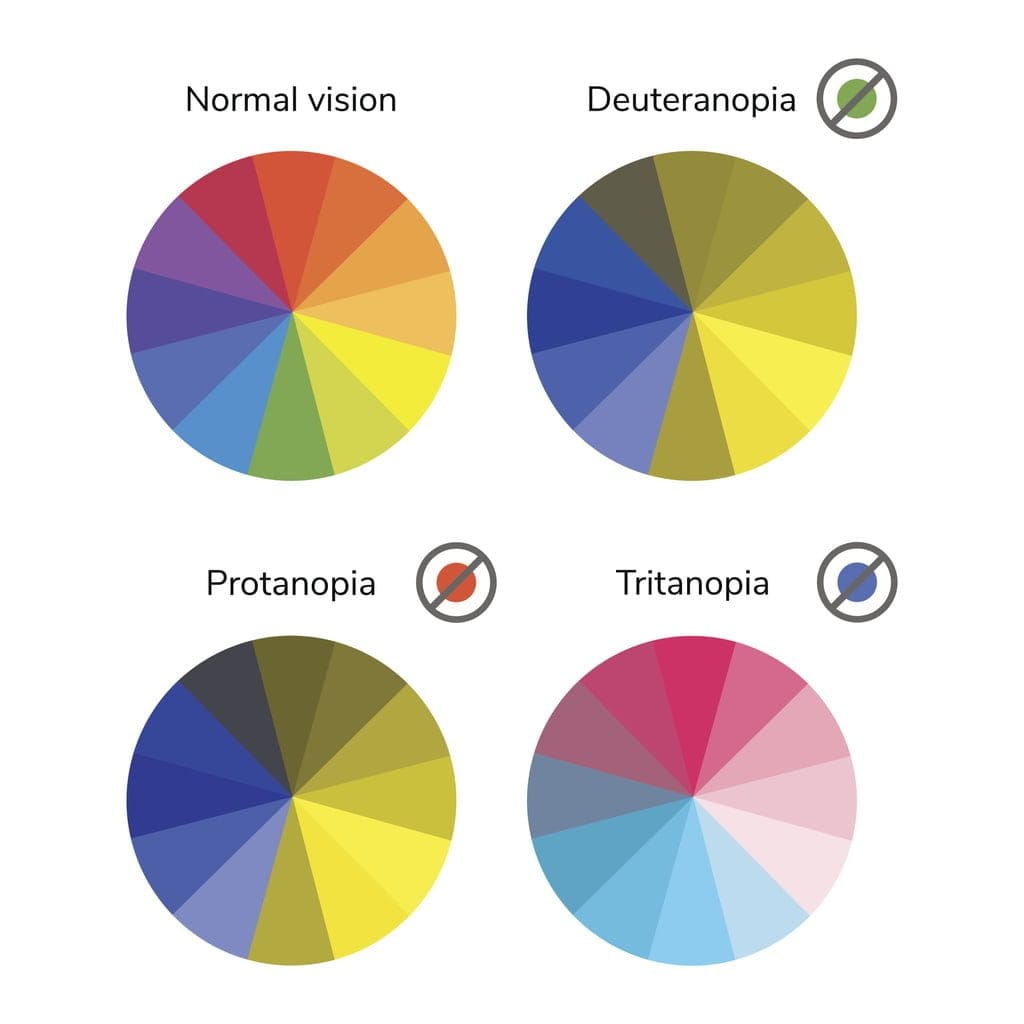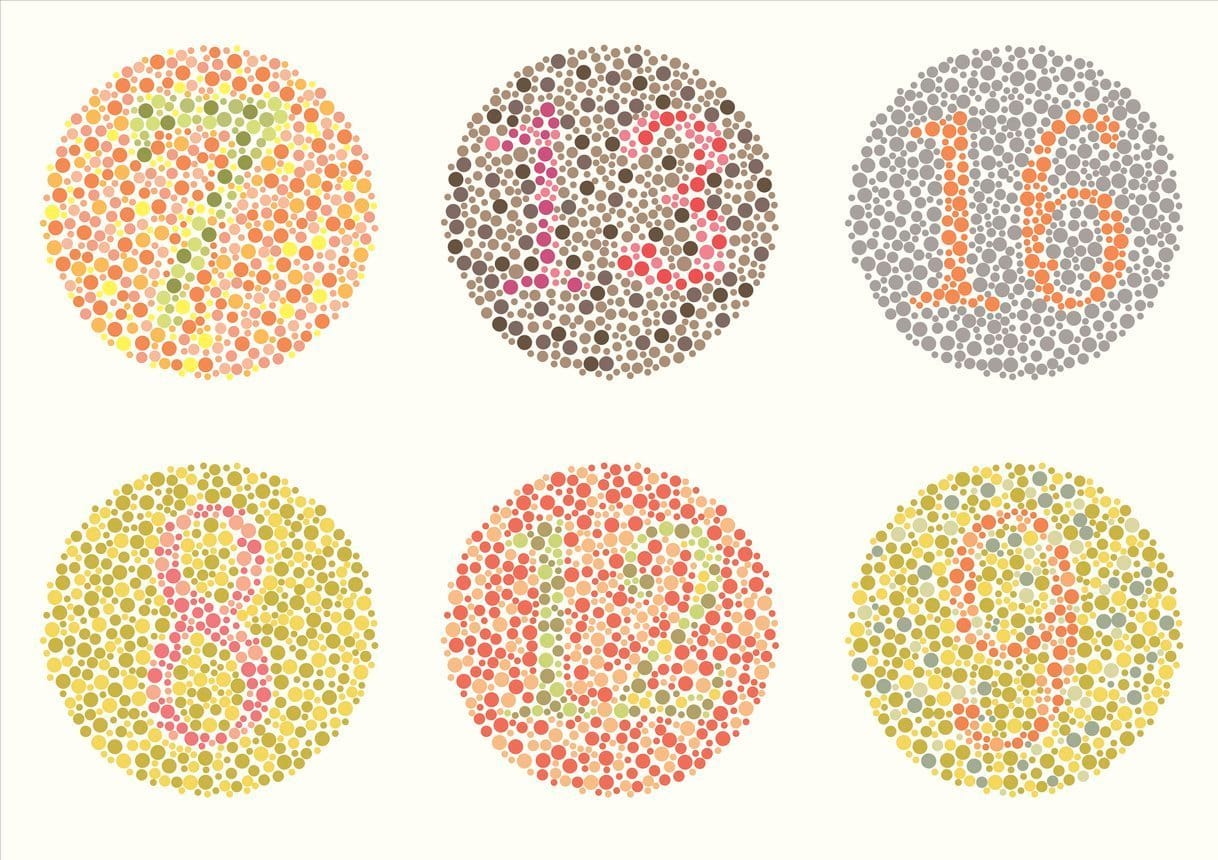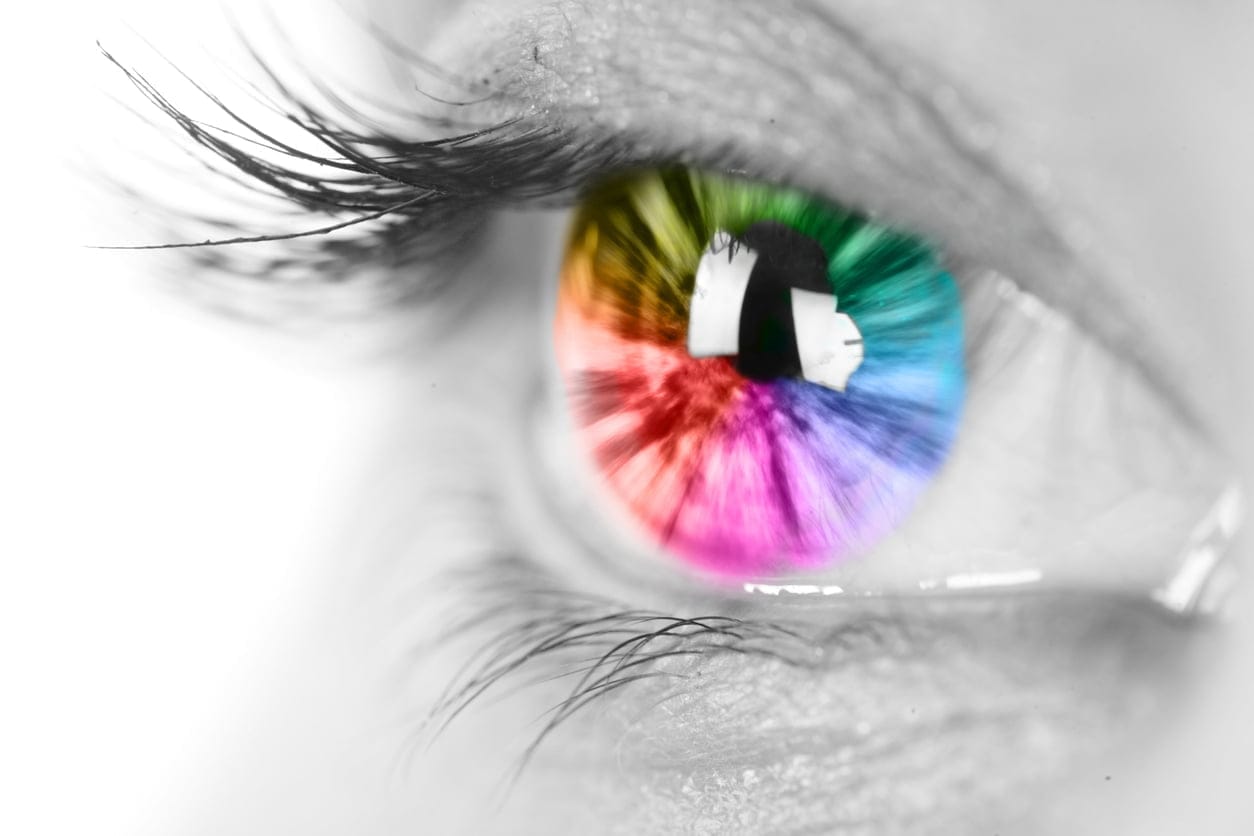What does it mean to be colorblind?
Color Vision Deficiency (CVD) is the inability to distinguish between different shades of color, or in extreme cases see colors at all. As much as 12% of the male population is colorblind, whereas only 0.4% of the female population struggles with seeing color. Why? The deficiency is carried on the X chromosome. Notably, women have 2 X chromosomes so they are better protected. The condition is carried on chromosomes, making CVD a hereditary condition.
Types of colorblindness
Like any other disease, CVD has different forms. There are three photoreceptors in the retina responsible for interpreting colors. The three cones, named S, M, L correlate with the short, medium, and long wavelengths visible to the human eye.

Red-green colorblindness
Usually, when people talk about colorblindness, they are referring to the most common red-green colorblindness, which is a genetic condition. There are 4 sub-types:
- Protanopia – missing all of the red cones (L cones)
- Deuteranopia – missing all of the green cones (M cones)
- Protanomaly- red cones are defective, red colors are muted and less vibrant
- Deuteranomaly – green cones are defective making it hard to distinguish red and blue colors apart. This is the most common form of colorblindness.
Blue-yellow colorblindness
Blue-yellow colorblindness is a rare form of colorblindness that affects the blue cones. There are two sub-types:
- Tritanomaly – blue cones are limited, distinguishing between blue and yellow hues is difficult.
- Tritanopia – missing all blue cones (S cones) This disease is inherited or acquired later in life due to environmental factors or age.
Complete color-blindness
Also called monochromacy, this condition is extremely rare. People are unable to see color at all, due to rods or cones not functioning correctly. Their vision might not be as sharp as people who see color normally.

The perks of being colorblind
Shockingly, being colorblind has its advantages. The University of Edinburgh discovered that individuals with red-green colorblindness are better at seeing camouflage. Color can actually impede our ability to detect patterns and textures. Because these individuals lack certain color receptors, they have learned to become more effective at pattern recognition. Therefore, recognizing unnatural patterns in the midst of natural ones would be easier. There are even reports that colorblind people excel as snipers in the military. Although colorblindness isn’t an inhibiting condition, it can be difficult to live with. However, there are cases where colorblindness can be an advantage!

